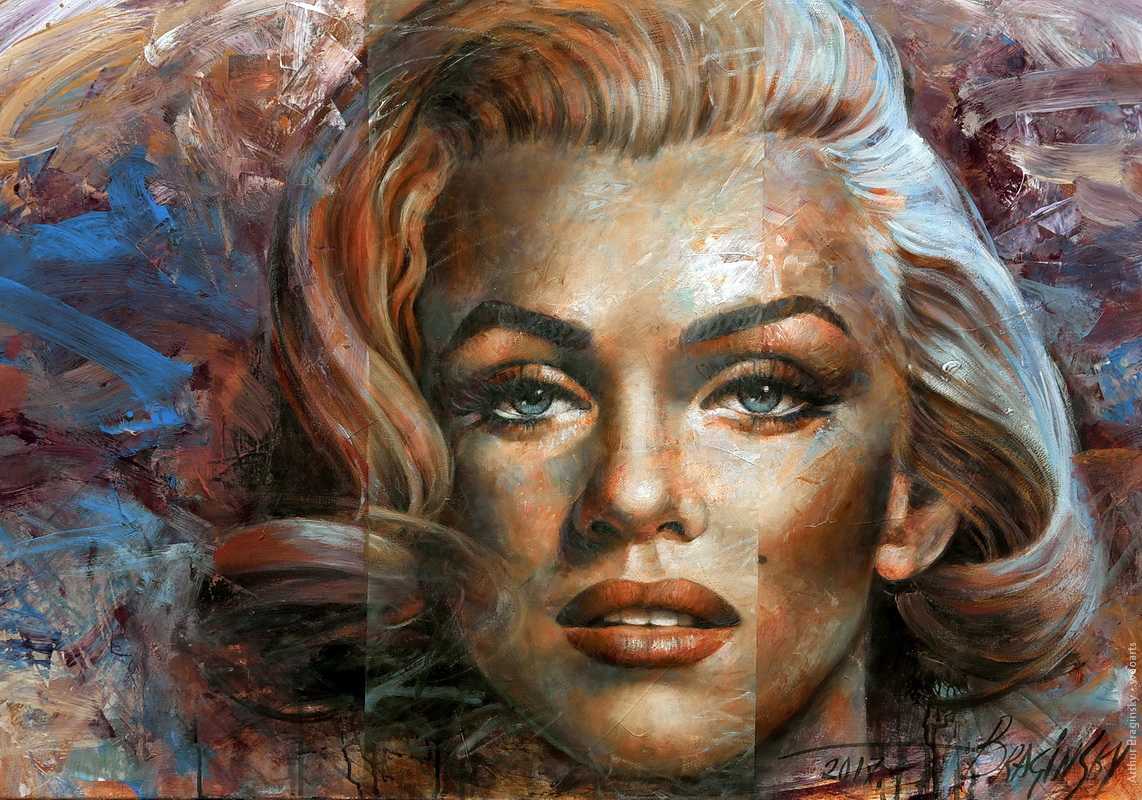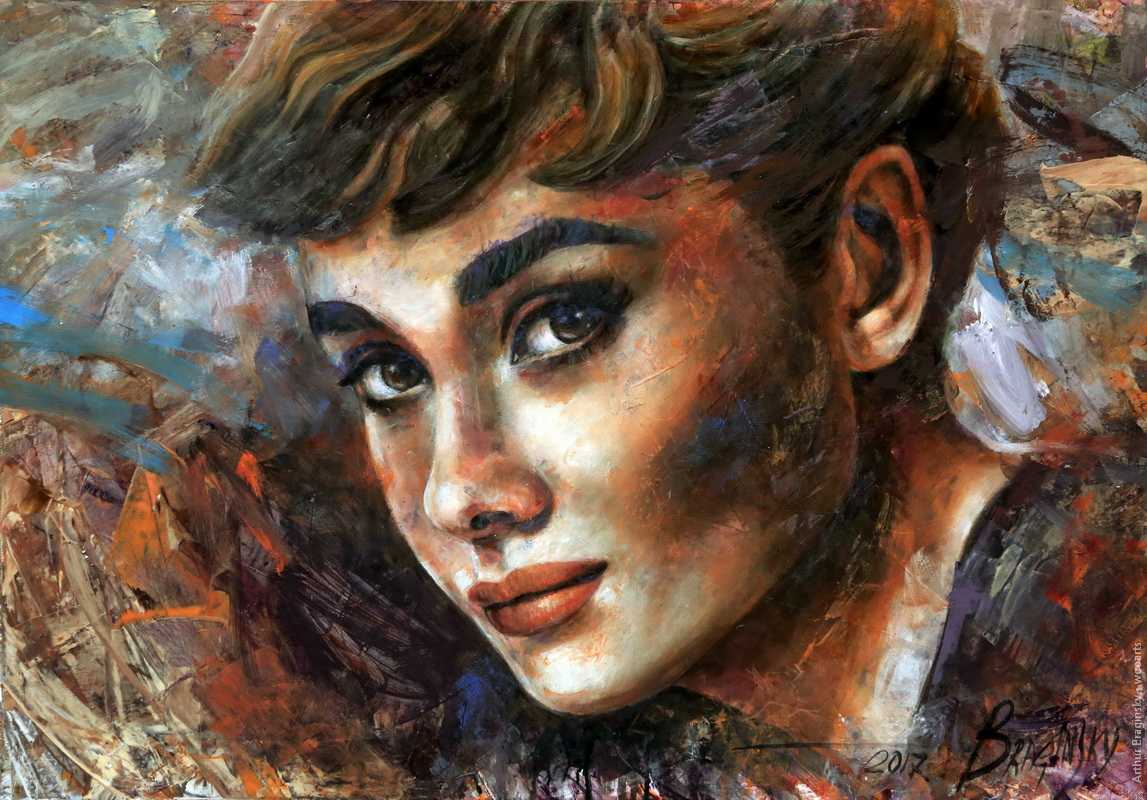He works as a decorator in a Russian dramatic theater. Here is his gallery of beautiful paintings in oil on canvas. The artist works in different styles and genres – nude, landscapes, portraits, and abstract art. According to Arthur Braginsky, painting the future, above all, will be considered from the standpoint of balance and stylistic spiritual harmony.
Personal Exhibitions
- 1991 – Uzhgorod, Ukraine
- 1992 – Stuttgart, Germany
- 2001 – Zalaegerszeg, Hungary
- 2001 – Vonyarcvashegy, Hungary
- 2002 – Keszthely, Hungary Festetic’s Palace- museum (one man show)
- 2003 – Budapest, Hungary
- 2005-Chakvar Hungary
- 2006- Zalaegerszeg, Hungary
- 2007 – Germany, Bad Windsheim
- 2007 – ArtEXPO 2007 France Chaville(Paris)
- 2007 Austria Salzburg exhibition Hungary artist
- 2008 – Russia Moskva Gostiniy Dvor ‘Portraits’
- 2008- Art Salon Moscow
- 2008- X-Show Moscow
- 2008- group exhibition JMA Gallery Vienna (Austria)
- 2008 – exhibition Art Event Belgium Antwerpen
- 2008 – exhibition LINEART GENT, Belgium
- 2008- Medal ‘Talent and Vocation’ by Worldwide alliance ‘Peacemaker’
- 2009- Art Salon Moscow
- 2009- Tallin Historian Museum
- 2009 – Budapest (Hungary) exhibition Karoly Palace.
- Gallery Classical Artists Worldwide LTD. (London) presentation.
- 2009 – Moscow, Art Manege art fair, JMA Gallery Vienna
- 2010 – Vienna (Austria) exhibition in JMA Gallery
- 2010 – Budapest (Hungary) exhibition Duna Palace
- 2010 – China International Gallery Exposition 2010 ( JMA Gallery)
- 2010 – London Russian, Eastern & Oriental Fine Art Fair. Park Lane Hotel (with CAW Gallery).
- 2011 – exhibition LINEART GENT, Belgium with gallery JMA Vienna
- 2012 – Vienna, Austria, 21st Century Art & Artists, Gallery M/Euro-Asian Art Center
- 2012 – Vienna, Austria, Gallery M/Euro-Asian Art Center
- 2013- Taipei, Art Revolution Taipei, art show
- 2013 – Lousanne, Swiss, exhibition Erotica’13
“Arthur Braginsky does not now nor has he ever had any affiliation with Saif Kahn or any other outside agents, talent scouts or other representatives. If contacted by anyone representing themselves as having an affiliation with the artist, please be assured that any such communication is unauthorized.”
Q: Why do so many people defend the bad stuff and attack the good stuff?
What makes them do it?
I don’t think there’s any single simple answer to this question. Since this is a broad cultural issue the reasons for their actions are quite diverse, but I can point to a few strong influences that started and sustained the trend away from the production and appreciation of good art in the past 100 or so years.
One psychological origin of this kind of thing has to do with self image and how one’s self-image can seem to be threatened by seeing great achievements. There’s a certain mind set which upon seeing any great thing, be it a painting, a skyscraper, or a nicely tended flower garden, reacts as if encountering an insult. A great symphony is perceived as a rebuke: “You couldn’t have written or performed this! You are worthless.” or “You can’t even comprehend what a computer chip is, let alone build one. You are stupid!” or “You can’t run as fast as this Olympian!
You are a pathetic weakling!» and such people develop a hatred for such things and seek to diminish the esteem with which the rest of us evaluate them. Alas, a great many of these people end up in academia where they aren’t called upon to accomplish great things, and where they can sabotage greatness and accomplishment by teaching it implicitly or explicitly to new generations. They get paid for it too.
Egalitarianism has long been prized as a social good in the West, and many people take this an otherwise good interpretation of this principle (that when it comes to legal and moral evaluation nobody is above the law or above moral evaluation) and pervert it into something very strange… that all people (and by inference all products of their work) are of equal worth.
This is transparently false of course, and those who are determined to abide by such a principle twist themselves into pretzels trying to reconcile their ideas with the fact that the words doesn’t conform to their false principle.
One form this takes is the claim that all art is equally good. That must be true of all artists are equally good. In some cases these people also feel compelled to find offsetting faults in great artists. They are likely to say things like “Sure X was a great painter, but he was also a child molester.” or “Sure X made great symphonies, but he stole money from his brother.” often with little or no evidence, and with no small amount of glee. In a way, this is very much like the syndrome I described in the last paragraph. They find themselves compelled to find the “feet of clay” of great men and their works in order to make themselves feel better about their own shortcomings.
There’s also a whole philosophical and psychological tradition that admonishes us against self-interest, pride, reason, objectivity, judgment, and certainty, which reinforces and is reinforced by the psychology above. This is exemplified by people like Hume, Kant, Hegel, James, Dewey, Schopenhauer, Freud, Camus, Skinner, and Rorty.
Their philosophical and psychological writings are not read or understood by most people, but they have been strongly influential among academics who digest their excuses for the abandonment of virtue and the promotion of the worthless to equal status. There’s also a political philosophy of egalitarianism that intrudes here as well. If all people are to be considered politically equal, should we not therefore refuse to recognize any distinctions in quality between their works as well?
Of course not, and of course the ideas of the philosophers I mentioned are hopelessly flawed as well (for reasons beyond the scope of this little document), but such notions can serve as a “cover” for the kinds of psychological feelings I mentioned above standing in the place of serious thought.
There’s an old saying that “Those who can do, those who can’t teach.” and there’s a lot of truth to it. Our educational institutions abound with people who can’t accomplish much and many of them know this. They have the psychological aversion to greatness I mentioned above, and worse, they have a strong desire to promote these views through their positions as teachers.
This has had a strong influence on a broad swath of the educated public which is spoon fed these kinds of ideas from the time they are five years old through graduate school and since they are rarely exposed to any alternate point of view, a great many just accept these errors without thinking about them very much. A lot of this mess can also be written off to plain old-fashioned laziness as well. Is it easier to smear paint on a canvas than to learn to draw and paint?
Is it easier to deny that any knowledge is possible than to actually learn what can be known?
Is it easier to to let someone else do the thinking for you when it comes to determining whether Mondrian is better than Bouguereau?
Is it easier to just go along with the popular fad of the day than to stick to your guns and earn the displeasure of those whom you need to work with?
The answers are obvious. There are also some strong financial and institutional forces propping up modernist art. Unlike real art which takes a lot of time and effort to create and which is rather self-explanatory in its meaning, modern “art” can be produced quickly and cheaply without any talent or preparation, and even more importantly, it can’t exist without a sizable population of critics and experts who “explain” the work to everyone else.
In the world of modern “art” the role of the marketing channel and the official experts is much inflated and it should be no surprise that they would prefer “art” in which their contribution is essential and in which the contribution of the artist is minimized. Furthermore, when it comes to filling customer orders, which would be most financially beneficial?
A case where a long waiting list of customers develops and the artist can only crank out a single work in months, or the case where he could create twenty in an afternoon?
Now, some people attribute the whole development of modernism to this factor, but I do not. I think it is a relatively minor one since the same pressures were evident in ancient times and nothing like modernism ever developed. People have to be prepared to accept nonsense before they will allow themselves to be taken in by this kind of business practice.
In the past few centuries a great deal of social progress has come in the West as a result of the casting down of authority figures and powerful institutions. FIrst, the Catholic Church was removed from its dominant role in Europe. Later the monarchies were de fanged or eliminated throughout Europe.
Superstitions were overthrown as new scientific kinds of understanding took root. To some, around the end of the 19th century (and even today) the idea took root that what made things like the elimination of European Monarchy was not just that monarchy isn’t a good idea, but rather than casting down of all authority figures of all kinds was a good idea for its own sake.
That’s why we have seen a steady stream of attempts to discredit every kind of authority whether in religion, government, science, media, or the arts. What was once a healthy skepticism about monarchy has since mutated into a nihilistic skepticism about anyone and everyone who claims to know anything. Of course, this dovetails nicely with many of the other influences I have been describing here.
Socially, there’s a well-known syndrome summed up in the fable of The Emperor’s New Clothes. In the story, the crooks spread a story around that only those who were intelligent and competent could see the wonderful new clothes they were making for the emperor, and since people hate to be thought poorly of by their peers, everyone insisted that he could see the clothes even though they were not there at all.
Similarly, the charlatans of the modern art world tell everyone that those who can’t see the excellence of modern art have something wrong with them. They are “philistines”, “unrefined”, or stupid. This kind of bullying intimidates a lot of people into setting aside their own honest judgment and instead parroting the positions they have been told are the way for intelligent and stylish people to think.
Lastly, for some time there has been a rather monopolistic control over the official institutions of artistic information…schools, museums, foundations, and the media by modernists who in general have shut out competing points of view. They had strong reasons for doing this, either they are completely right or they are horribly wrong and they can’t tolerate having little boys around to ask embarrassing questions that they can’t answer.
Worse yet, these are not just hubs of education for the country, but also for money. For a long time it was impossible to get much of a position in teaching or journalism without holding the standard liberal meanings. This is one area where I think recent changes have been positive by the way.
Because of the Internet and other alternative media, it is now impossible to shut up little boys who can shake things up, and that is bound to change things a lot for the better.
AUTHOR: Brian K. Yoder

View Arthur Braginsky Paintings





















